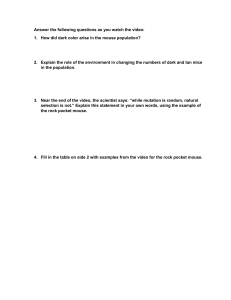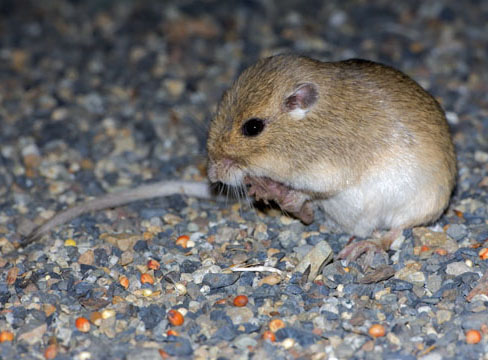

Not all downloadable documents for the resource may be available in this format. The “Resource Google Folder” link directs to a Google Drive folder of resource documents in the Google Docs format.

We would ask that you attribute these to BioInteractive and not use them for commercial purposes. These card images are licensed under a Creative Commons Attribution-NonCommercial-ShareAlike 4.0 International (CCC BY-NC-SA 4.0) license.
#TWO VARIATES OF ROCK POCKET MOUSE ZIP FILE#
A document within the ZIP file contains suggestions for their use. The “Card Images” ZIP file contains individual image files for the cards used in this activity that can be used in the classroom, particularly in online courses. This activity serves as an extension to the short film The Making of the Fittest: Natural Selection and Adaptation and as a means of reinforcing the concepts of variation and natural selection. The activity involves collecting and graphing data and making evidence-based claims. They then order those images based on the data and their knowledge of evolution by natural selection. Students analyze data from images of rock pocket mouse populations in different settings and over time.
Depending on environmental conditions, inherited characteristics may be advantageous, neutral, or detrimental.This activity allows students to collect and analyze data on the evolution of coat color in rock pocket mouse populations living on differently colored substrates. Traits that confer an advantage may persist in the population and are called adaptations. Over time, the proportion of individuals with advantageous traits may increase (and the proportion with disadvantageous traits may decrease) due to their chances of surviving and reproducing. It provides an opportunity for students to analyze amino acid data and draw conclusions about the evolution of coat-color phenotypes in the rock pocket mouse. Inherited characteristics affect the likelihood of an organism's survival and reproduction. This lesson serves as an extension to the Howard Hughes Medical Institute short film The Making of the Fittest: Natural Selection and Adaptation. New heritable traits can result from mutations. Evolution results from genetic drift acting upon genetic variation within a population. Evolution results from natural selection acting upon genetic variation within a population. Evolution occurs through multiple mechanisms. Not all similar traits are homologous some are the result of convergent evolution.  There is a fit between organisms and their environments, though not always a perfect fit. An organism's features reflect its evolutionary history. Information on controversies in the public arena relating to evolution. Alignment with the Next Generation Science Standards. The big issues – Pacing, diversity, complexity, and trends. The difference is that a proverb is a fixed expression, while a proverbial phrase permits alterations to fit the grammar. A proverbial phrase or a proverbial expression is a type of conventional saying similar to proverbs and transmitted by oral tradition. Whenever known, the origin of the phrase or proverb is noted. What’s so special about this little mouse Populations of rock pocket mice are found all. Below is an alphabetical list of widely used and repeated proverbial phrases. Its impact on science, however, has been enormous. A typical rock pocket mouse is 172 millimeters long from nose to rump, which is shorter than an average pencil. Macroevolution – Evolution above the species level The tiny rock pocket mouse weighs just 15 grams, about as much as a handful of paperclips. Microevolution – Evolution within a population. Mechanisms: the processes of evolution – Selection, mutation, migration, and more.
There is a fit between organisms and their environments, though not always a perfect fit. An organism's features reflect its evolutionary history. Information on controversies in the public arena relating to evolution. Alignment with the Next Generation Science Standards. The big issues – Pacing, diversity, complexity, and trends. The difference is that a proverb is a fixed expression, while a proverbial phrase permits alterations to fit the grammar. A proverbial phrase or a proverbial expression is a type of conventional saying similar to proverbs and transmitted by oral tradition. Whenever known, the origin of the phrase or proverb is noted. What’s so special about this little mouse Populations of rock pocket mice are found all. Below is an alphabetical list of widely used and repeated proverbial phrases. Its impact on science, however, has been enormous. A typical rock pocket mouse is 172 millimeters long from nose to rump, which is shorter than an average pencil. Macroevolution – Evolution above the species level The tiny rock pocket mouse weighs just 15 grams, about as much as a handful of paperclips. Microevolution – Evolution within a population. Mechanisms: the processes of evolution – Selection, mutation, migration, and more. 
The history of life: looking at the patterns – Change over time and shared ancestors. An introduction to evolution: what is evolution and how does it work?.








 0 kommentar(er)
0 kommentar(er)
